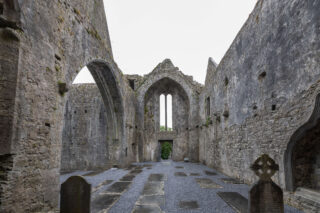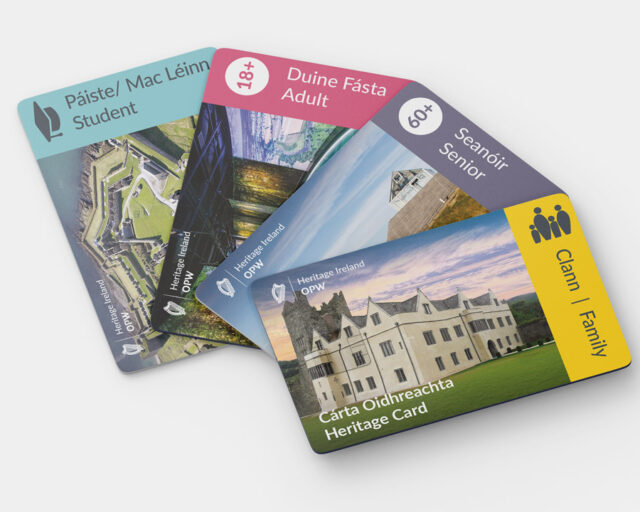Notice
Quin Abbey is a state-owned National Monument in the care of the Office of Public Works
*Quin Franciscan Friary is open daily 09:30 – 17:00*
WARNING: It should be noted that these sites are unguided and a level of care and caution should be maintained during all stages of your visit. The Office Of Public Works (OPW) will not be held responsible for any damages, injuries, or losses that occur
Quin Franciscan Friary
Quin Friary has had a fraught and complex history, with many iterations of the abbey since the 1200s.
The original church on-site was burned in 1278, and in 1281 a castle was built on these grounds by Anglo-Norman Lord Thomas de Clare. The purpose behind this was to increase his status within the kingdom of Thomond, while the O’Brien clan was preoccupied. de Clare’s rise was curbed in 1318 during the battle of Dysert O’Dea, and the O’Brien’s reclaimed their control over Thomond.
de Clare’s castle was destroyed by the MacNamara’s and the abbey was founded in 1350, with sections, such as the cloisters, built by Síoda Cam MacNamara in 1402, and the bell-tower and Lady chapel by Maccon MacNamara in 1430. Síoda founded the abbey to use as a family burial plot, while Maccon allowed the Franciscan friars to move into the abbey in 1433.
The friary was affected by the dissolution of the monasteries in 1541, and became the property of the O’Brien’s in 1547, but they still allowed the friars to live there. However, by 1548 the abbey had fallen into disrepair.
In 1584 the abbey witnessed a very gruesome act, when the Chief Justice, Sir John Perrot, had Donough Beg O’Brien hung on the steeple of Quin Abbey. It was then burned by Donough, Earl of Thomond, in revenge; at that time it was being used as an English barracks.
In 1604 the friars repaired the abbey, only for it to be desecrated in 1651 by Cromwellian forces. By 1667 the Franciscans returned; it was again reported empty in 1681, but was occupied by the friars once more in 1691.
The last of the friars died in 1820, and 60 years later in 1880 the abbey came under the care of the Board of Works (now the OPW) as a National Monument.
Today, you can still see the remains of de Clare’s castle and parts of the towers in the corners, as the friary was built within the castle ruins. The cloisters, dating back to the 1400s, are some of the best preserved items of Franciscan architecture in Ireland.
Visit Historic Environment Viewer and Monastic Ireland for more information on Quin Franciscan Friary
Protect our Past - Click here to read about the importance of protecting our country’s unique heritage sites
This national monument is protected in accordance with the National Monuments Acts 1930 to 2014
Gallery
Nearby sites to visit
Ennis Friary
Admire some exquisite Renaissance carvings
Approx. 8.5 km from Quin Franciscan Friary
Askeaton Castle
A ruined stronghold of the earls of Desmond
Approx. 25.4 km from Quin Franciscan Friary
Adare Castle
Discover a medieval masterpiece, built for defence
Approx. 28.7 km from Quin Franciscan Friary
Lough Gur Visitor Centre and Lakeshore Park
9,000 years of life
Approx. 40.2 km from Quin Franciscan Friary
Desmond Castle Newcastlewest
Where sounds of medieval revelry echo around the walls
Approx. 43.1 km from Quin Franciscan Friary
Scattery Island Monastic Site and Visitor Centre
Discover the History, Myth and Legend of Scattery Island
Approx. 49.8 km from Quin Franciscan Friary




